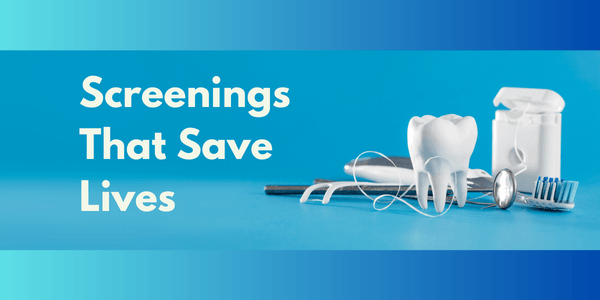
This 6-Step Oral Cancer Screening Process Saves Lives
Posted April 18, 2024
Being a dental professional is about so much more than just ensuring day-to-day oral health. The mouth is a window to the rest of the body and tells a lot about a person’s overall health. The amount of time we spend with our patients allows us to check for devastating diseases like oral cancer. Prevention and early detection are the best ways to avert patients’ suffering.
According to the American Cancer Society’s latest statistics, about 58,450 new cases of oral cavity or oropharyngeal cancers will be diagnosed in the United States in 2024, and about 12,230 people will die from these cancers. That’s more than one person dying from oral cancer every hour of every day.
Oral cavity and oropharyngeal cancers are on the rise and occur in anatomy dental hygienists and dentists alike examine every day. It includes the tongue, tonsils, gums, floor of the mouth, lips, minor salivary glands (which often occur in the roof of the mouth), and other sites. Detecting possible oral cancers in the hygienist’s chair—and elevating concern to the dentist for a referral to an ENT or oral surgeon for biopsy—means that your patients can be diagnosed and treated early.
The time we spend with our patients allows us to spare them the trauma of devastating diseases like oral cancer. Oral Cancer Cause reports that early oral cancer detection increases survival rates by 80 – 90%. Since almost all cases of oral cancer are discovered in the hygienist’s or dentist’s chair, the simple act of oral screening should be an important, and sometimes lifesaving, part of every appointment.
Who Should Be Screened For Oral Cancer?
The answer is everyone, including teens. The founders of Oral Cancer Cause, Linda Miles and Robin Morrison, produced the following video answering that question. It also discusses why it is important to screen every dental patient and follow up with edentulous denture and implant patients who are not coming to us for regular preventive dental cleanings.
Raising Awareness & Educating Patients About Oral Cancer
Rachel Wall, RDH and Founder of Inspired Hygiene, shares a heartening story in the video below, and she explains how you can access the Six-Step Screening Card to share with patients. We hope her message encourages you to include oral cancer screenings as a permanent addition to your workflow and educate your patients about self-screening between dental visits.
As you’re doing an oral cancer screening, it’s helpful to explain to patients that the high-risk areas for cancer are the sides and undersurface of the tongue, the floor of the mouth, the soft tissue at the back of the roof of the mouth, and the tonsils.
It’s important to advise patients to call for an examination by the dentist if they observe:
- A sore in their mouth that lasts more than a week
- One or more white, red, or blue spots appear on their mouth tissues, including the back of the throat
- An unusual lump in their mouth or throat
- A non-tender lump on the outside of their neck
- They have a chronic sore throat and hoarseness
- They have difficulty swallowing or chewing
Reinforce the importance of screening and possibly save lives by giving each patient a Six-Step Screening Card. It illustrates the six steps of cancer screening and lists the symptoms they should report.
Become a Health Advocate!
Every April for Oral Cancer Awareness Month, we feel the push to proactively raise oral cancer awareness.
In addition to performing regular oral cancer screenings throughout the year with every patient, it’s imperative to perform head and neck exams and record their blood pressure and pulse. Building and monitoring this health history provides you with reference data if you notice a change in the future. But comprehensive care doesn’t stop here.
It’s also helpful to engage your patients in health discussions. Look for opportunities to celebrate their initiative-taking steps toward wellness and lead them to think deeper about their preferred health futures. Often, we have lively conversations about research results reported in the news that are relevant to health challenges they or family members have faced or are facing.
If they hint at a health problem or concern, you simply say, “Tell me more about that.” If they recently read an oral-systemic or dental article, they might ask you what you think.
Multiple opportunities arise with patients to engage in conversations about various aspects of health every day. From weight gain worries…to struggles with finding time for exercise…to battling gum inflammation…to chemotherapy…to heart health worries…to an uncle’s oral cancer history. You name it, you want to be game to listen and talk about it.
These precious minutes with patients as health enthusiasts, subject matter experts, and encouragers lead to a greater quality of life. This includes better oral home care, healthier lifestyles, and self-examination for oral cancer. Additionally, their trust in our dental practices increases and provides inspiration to keep moving toward optimal oral and systemic health. These are some reasons our dental hygienists love their work and are glad they chose this career!
Updated April 2024.
We connect and educate more than 900,000 job seekers in the U.S. and Canada to build better places to work through teams that excel.



.png)




.png)
